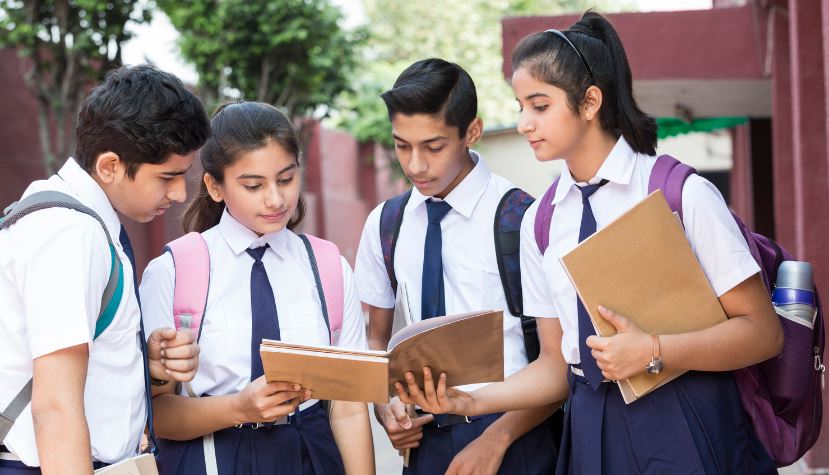India, home to over 1.4 billion people, has witnessed remarkable progress in improving literacy over the years.
Literacy, defined as the ability to read and write with understanding, is more than just a metric, it’s a foundation for socio-economic growth and empowerment.
This blog explores the latest literacy statistics in India, highlights key challenges, and provides an overview of state-wise and gender disparities.
Additionally, we delve into the initiatives driving literacy improvements and predictions for future growth, shedding light on why literacy is vital for India’s development.
What Is the Literacy Rate of India in 2024?

As of 2024, the literacy rate in India has reached 80%, a steady increase from the 77.7% recorded in 2022. This figure indicates the proportion of individuals aged 15 and above who can read and write in any language.
Key Factors Contributing to the Rise in Literacy:
- Educational Policies: Programs like Sarva Shiksha Abhiyan and Samagra Shiksha Abhiyan have ensured access to education for millions of children.
- Infrastructure Improvements: Enhanced facilities in schools, particularly in rural areas, have encouraged higher enrollment rates.
- Awareness Campaigns: Initiatives such as Beti Bachao Beti Padhao have emphasized the importance of educating girls.
This rise in literacy showcases India’s commitment to achieving its education-related Sustainable Development Goals (SDGs).
How Has India’s Literacy Rate Evolved Over the Years?
India’s literacy rate has transformed dramatically since independence in 1947, when only 12% of the population was literate. This evolution reflects decades of sustained effort in policy-making, investment, and public awareness.
Historical Growth in Literacy Rates:
- 1951: 18.3%
- 1981: 43.6%
- 2011 Census: 74.04%
- 2022 Estimate: 77.7%
- 2024 Projection: 80%
The Right to Education (RTE) Act of 2009 has been a game-changer, mandating free and compulsory education for children aged 6 to 14. Alongside government initiatives, non-governmental organizations (NGOs) like Pratham have played a crucial role in adult literacy and bridging the gap for out-of-school children.
While the progress is commendable, challenges like high dropout rates and resource disparities continue to hinder faster growth.
What Are the Gender-Based Differences in Literacy Rates?

Despite steady improvements, India continues to grapple with significant gender disparities in literacy rates. In 2024, the literacy rate for males is around 84.7%, while for females, it stands at 70.3%.
Factors Contributing to Gender Disparity:
- Cultural Norms: In many regions, traditional roles discourage education for girls.
- Economic Constraints: Families with limited income often prioritize boys’ education over girls’.
- Safety Concerns: Lack of secure transportation and proper school facilities deters female enrollment.
Interventions to Bridge the Gender Gap:
- Beti Bachao Beti Padhao: Promotes education and empowerment of girls.
- Kasturba Gandhi Balika Vidyalayas (KGBVs): Provide residential schooling for girls in marginalized communities.
- Scholarships: Initiatives like the National Means-cum-Merit Scholarship Scheme encourage girls to continue education.
Though the gap has narrowed over the years, achieving gender parity in literacy requires sustained efforts to overcome socio-cultural barriers.
How Does State-Wise Literacy Vary Across India?
India’s diverse socio-economic landscape contributes to stark variations in literacy rates across its states and union territories.
States with the Highest Literacy Rates in 2024:
- Kerala: 94% (Highest)
- Mizoram: 91.1%
- Tripura: 89.9%
States with the Lowest Literacy Rates in 2024:
- Bihar: 61.8% (Lowest)
- Rajasthan: 64.7%
- Jharkhand: 66.4%
Why Does Kerala Excel in Literacy?
Kerala’s success can be attributed to its investment in public education, a robust network of libraries, and a societal emphasis on learning. Additionally, Kerala has achieved near gender parity in literacy.
Challenges in Low-Literacy States:
Lowest literacy states like Bihar and Rajasthan struggle with poverty, inadequate infrastructure, and low female participation in education. Addressing these issues requires region-specific strategies and increased budgetary allocation for education.
What Is the Urban and Rural Divide in Literacy?

India’s literacy landscape is characterized by a notable gap between urban and rural areas. In 2024, the literacy rate in urban regions is approximately 87.7%, whereas rural areas lag at 73.5%.
Reasons for the Urban-Rural Divide:
- Infrastructure Disparities: Urban schools are better equipped with facilities like libraries, internet access, and trained teachers.
- Economic Factors: Rural families are often dependent on children for labor, reducing school attendance.
- Cultural Norms: Early marriages and traditional roles in rural communities discourage formal education, especially for girls.
Efforts to Bridge the Divide:
- The Digital India Campaign has introduced e-learning tools to rural schools.
- Mobile Learning Vans bring education to remote villages.
- NGOs like Barefoot College empower rural communities with basic literacy and skill training.
Closing this gap is essential for achieving equitable development across India.
Which Initiatives Have Boosted India’s Literacy Rate?
India’s progress in literacy can be credited to a mix of government programs, private sector efforts, and NGO contributions.
Notable Government Initiatives:
- Sarva Shiksha Abhiyan: Aims at universalizing elementary education.
- Mid-Day Meal Scheme: Provides nutritious meals to boost attendance and retention.
- Digital India: Introduces digital tools and smart classrooms to improve learning outcomes.
NGO Contributions:
Organizations like Pratham, Teach For India, and Akshaya Patra play a significant role in addressing gaps in education delivery and infrastructure.
These initiatives have collectively improved enrollment rates, reduced dropouts, and enhanced learning outcomes.
What Are the Factors Hindering India’s Literacy Growth?

Despite progress, several barriers continue to hinder India’s literacy growth:
- Economic Inequality: Low-income families often view education as a luxury rather than a necessity.
- Inadequate Infrastructure: Many schools lack basic facilities like clean water, electricity, and functional classrooms.
- High Dropout Rates: Economic pressures compel many children to leave school prematurely.
- Language Barriers: India’s linguistic diversity creates challenges in delivering uniform education.
Addressing these issues requires comprehensive reforms, increased funding, and collaboration among stakeholders.
How Does India Compare to Global Literacy Trends?
Globally, the literacy rate is an important measure of a nation’s progress in education and social development.
As of 2024, the global average literacy rate stands at 86.3%, while India’s rate is at 80%. This marks significant progress for the country but also highlights the gap compared to other nations, particularly global leaders in literacy such as China and Sri Lanka.
China boasts a 97% literacy rate, achieved through decades of strategic investments in universal education policies, robust teacher training programs, and an emphasis on gender equality in education.
Similarly, Sri Lanka has maintained a 92.3% literacy rate, attributed to its efficient implementation of education policies, free schooling, and strong government accountability in the education sector.
Comparative Analysis:
- China: 97% literacy rate due to decades of investment in universal education.
- Sri Lanka: 92.3%, showcasing efficient policy implementation.
- India: 80%, indicating room for improvement, especially in rural and underserved areas.
India’s position highlights the need for targeted interventions to bridge the gap with global standards.
Predictions for 2024 and Beyond
India’s literacy journey is expected to gather momentum, with projections suggesting that the rate could reach 85% by 2030. To achieve this, India must build on existing efforts while addressing key areas of concern. Some critical drivers of future growth include:
- Policy Reforms: The introduction of progressive educational reforms, such as the National Education Policy (NEP) 2020, aims to promote inclusive and flexible learning systems. A greater focus on digital tools, open schooling systems, and vocational training is set to make education more accessible to diverse communities.
- Infrastructure Development: India has committed to improving the quality of school infrastructure in rural areas, including the provision of classrooms, sanitation facilities, and digital connectivity. These improvements will ensure that education becomes both accessible and engaging for students in underserved regions.
- Community Involvement: Grassroots movements, such as Self-Help Groups (SHGs) and NGO-led programs, are driving community-based education. Increased parental involvement, local resource mobilisation, and awareness campaigns are helping overcome barriers to education at the village level.
By maintaining focus on these pillars, India can bridge the literacy gap, equipping its next generation with the skills necessary for global competitiveness in the 21st century.
Why Is Literacy Important for India’s Growth?

Literacy is not just an educational milestone, it is the foundation for individual empowerment and national progress. For a country like India, improving literacy rates is critical to unlocking its vast potential and ensuring equitable development. Here’s why literacy matters:
1. Boosting Economic Growth
A literate population enhances productivity, adaptability, and innovation. Literate individuals can better embrace technological advancements, leading to a stronger workforce capable of driving economic growth.
Studies show that every year of additional schooling can increase a person’s earning potential by 10% to 20%, directly contributing to national GDP.
2. Enhancing Social Equity
Literacy reduces disparities in society, particularly those based on gender and region. Educating women and marginalised communities leads to better health outcomes, improved family income, and greater social cohesion.
Literacy empowers individuals to rise above systemic inequalities and access opportunities for a better quality of life.
3. Empowering Communities
Communities with higher literacy rates are more likely to engage in civic activities, such as voting, community organisation, and public health initiatives.
Literate individuals make informed decisions that positively impact their families and communities, creating a ripple effect of progress and empowerment.
By prioritising literacy, India can unlock its demographic dividend, transforming its large youth population into a skilled and empowered workforce capable of driving sustainable development.
Conclusion
India’s 80% literacy rate in 2024 showcases the country’s progress but also reveals the persistent challenges of bridging gaps in gender equity, regional disparities, and rural infrastructure.
Achieving universal literacy will require collective efforts from policymakers, educators, and local communities.
By addressing these issues through sustained investments, innovative reforms, and inclusive strategies, India can position itself as a global leader in education.
A literate population will not only ensure individual empowerment but also drive national prosperity and equity, paving the way for a brighter future.
FAQs
What is the current literacy rate in India?
As of 2024, India’s literacy rate is approximately 80%.
Which state has the highest literacy rate in India?
Kerala leads with a literacy rate of 94%.
What is the literacy rate among females in India?
The female literacy rate in India is around 70.3%.
How does India compare globally in literacy?
India’s literacy rate of 80% is below the global average of 86.3%, lagging behind nations like China and Sri Lanka.
What are the major challenges affecting literacy in India?
Economic inequality, inadequate infrastructure, and high dropout rates are key challenges.
How can rural literacy rates be improved?
Rural literacy can be enhanced through digital learning, mobile education units, and community-led initiatives.
Why is literacy crucial for India’s development?
Literacy drives economic growth, social equity, and individual empowerment, making it vital for national progress.

